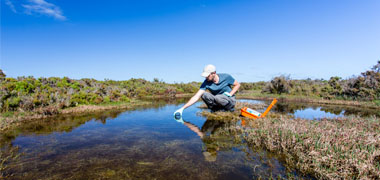
This role has a high level of AI exposure. While some human skills are required, many tasks could be automated or replaced by new technology.
Explore all careersA Soil Scientist studies soil properties and health, conducting fieldwork and analysis to support sustainable land use and agricultural practices.
Get qualified to work as a Soil Scientist with a course recognised across Australia. Speak to a training provider to learn more.

Browse occupations related to Soil Scientist



For those seeking to advance their careers in environmental sciences, the Soil Scientist courses in Blue Mountains offer specialised training tailored for experienced learners. The region is home to the renowned UNSW, a Registered Training Organisation that provides top-notch education in subjects related to Soil Science. Among the courses available in Blue Mountains, the Bachelor of Advanced Science (Honours) (Earth Science) is a particularly popular choice, equipping students with essential knowledge and skills required in the field of soil science.
Enrolling in a Soil Scientist course not only prepares you for exciting career opportunities but also aligns you with various related job roles in the region. Upon completion of your studies, you may consider positions such as Land Manager, Ecologist, or a dedicated Conservation Officer. Moreover, roles such as Soil Conservationist and Conservationist are also directly aligned with the expertise gained through these courses, addressing the vital need for sustainable land use in the majestic Blue Mountains region.
The local environment in Blue Mountains, characterised by its unique ecosystems and diverse landscapes, underscores the importance of trained professionals in managing natural resources effectively. By choosing to study Soil Scientist courses in this area, students can significantly contribute to the preservation of its rich biodiversity. This makes the opportunity to engage with esteemed providers like UNSW an invaluable step toward building a fulfilling career. Explore the various pathways available and consider how you might impact the future of environmental conservation in the Blue Mountains.